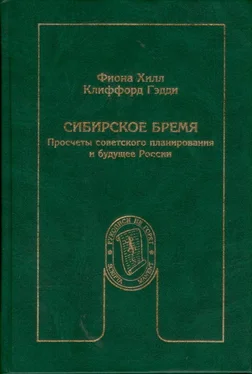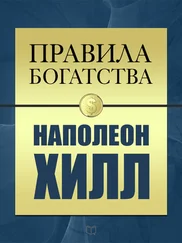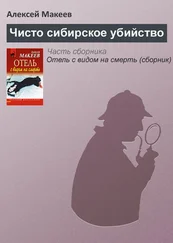15В 1998 году ВВП Северо-Западных территорий Канады равнялся примерно 2,4 миллиарда долларов, порядка 15 процентов из которых были поступлениями от добывающей промышленности. ВВП Юкона достиг 947 миллионов долларов, 7 процентов из которых принесли разработки месторождений. Для сравнения, в том же самом году на долю добывающей промышленности в сводном ВВП Канады приходилось 3,6 процента. Добывающая промышленность занимала второе место только в государственных данных по основным отраслям промышленности в Северной Канаде. Canada Mining Facts. Mineral and Mining Statistics ( http://mmsd1.mms.nrcan.gs/mmsd/facts/canFact_e.asp?region1d=12).
16Northern Indicators, 2000. Published under the authority of the Minister of Indian Affairs and Northern Development. Ottawa, 2000 ( http://www.ainkinac.gc.ca/pr/sts/pu2000_e.pdf).
17 Michael Lelyveld. Russia: Foreign Energy Investment Lagging in Ex-Soviet Region // RFE/RL. Feachers. 27 November 2002.
18 Vladimir Kontorovich. Can Russia Resettle the Far East? // Postcommunist Economies. 2000. Vol. 12. No 3. P. 374.
19Ibid. P. 379.
20 Vladimir Kontorovich. Economic Crisis in the Russian Far East: Verdevelopment or Colonial Exploitation? // Post-Soviet Geography and Economics. 2001. Vol. 42. No. 6. P. 395, процитировано российским экономистом Юрием Пивоваровым.
21Ibid. P. 400-401.
22Ibid. P. 404.
23Предложения В. Конторовича аналогичны предложениям известных российских аналитиков, которые критически относятся к подходу российского правительства к региону. См., например, рекомендации по российскому Северу Михаила Делягина, директора Московского института проблем глобализации, в: Sarah Karush. Harnessing the North // The Moscow Times. 28 November 2000.
24 Mikhail Alexseev. Socioeconomic and Security Implications of Chinese Migration in the Russian Far East // Post-Soviet Geography and Economics. 2001. Vol. 42. No 2. P. 95-111.
25Несколько российских регионов уже признаны ЮНЕСКО местами всемирного наследия: девственные леса Коми в 1995 году, озеро Байкал в 1996-м, вулканы Камчатки в 1996-м, Золотые горы Алтая в 1998-м, части полуострова Камчатка в 2001 году, Центральный Сихоте-Алинь в Приморском крае также в 2001-м. Более подробно см. сайт ЮНЕСКО: http://www.unesc.org/whc.
26Важно отметить различие между той разновидностью специального фонда, который предлагаем мы, от специализированных ресурсных фондов, учреждаемых в других странах. Штат Аляска, например, создал Корпорацию постоянного фонда Аляски (Alaska Permanent Fund Corporation; более подробно см. сайт: http://www.apfc.org) с целью перераспределения доходов от природных ресурсов среди населения штата. Дивиденды от фонда пополняют региональную экономику более чем на 10 миллиардов долларов, а их доля в годовом доходе некоторых жителей сельских районов штата составила все 10 процентов. Идею сибирского ресурсного фонда предполагается использовать для стимулирования отъезда людей из региона, а не на то, чтобы поощрить их оставатьс!я (что является целью Фонда Аляски). Этот фонд не должен быть фондом освоения Сибири и содержания ее жителей.
1 Thomas С. Peterson and Russell S. Vose. An Overview of the Global Historical Climatology Network Temperature Database. P. 5 ( http://www.ncdc.gov/ol/climate/research/ghcn/ghcnoverview.html).
2Городские климатические данные Гидрометцентра России ( http://meteo.mfos-pace.ru/climate/html/index.ssi).
3 John F. Griffiths. Some Problems of Regionality in Applications of Climate Change // Proceedings of the Fourteenth International Congress of Biometeorology. Ljubljana, Slovenia, September 1996. P. 384-390.
1 Славин С. В. Советский Север: Современное освоение и перспективы на будущее. М.: Прогресс, 1972. С. 38-39.
2См., напр.: MichaelBradshaw. The Russian North in Transition: General Introduction // Post-Soviet Geography. April 1995. Vol. 36. No 4. P. 196.
3 Timothy Heleniak. Out-Migration and Depopulation of the Russian North during the 1990s // Post-Soviet Geography and Economics. April 1999. Vol. 40. No 3. P. 157.
1 Tatiana Mikhailova. Where Russians Should Live: A Counterfactual Alternative to Soviet Location Policy. Unpublished paper. Pennsylvania State University (3 December 2002). Ph.D. diss.
2См., напр.: Philip £ Graves. Migration and Climate // Journal of Regional Science. 1980. Vol. 20. No 2. P. 227-237; M. I. Cropper. The Value of Urban Amenities // Journal of Regional Science. 1981. Vol. 21. No 3. P 359—374; Jennifer Roback. Wages, Rents, and the Quality of Life // Journal of Political Economy. 1982. Vol 90. No 6. P. 1257-1979.
Англо- и франкоязычные источники
Abele, Gunars. «Effect of Cold Weather on Productivity, in Technology Transfer Opportunities for the Construction Engineering Community». Proceedings of Construction Seminar, February 1986. U.S. Army Cold Regions Research and Engineering Laboratory.
Aganbegyan, Abel. Inside Perestroika: The Future of the Soviet Economy. Translated by Helen Szamuely. Harper and Row, 1989.
Alexseev, Mikhail. The Chinese Are Coming: Public Opinion and Threat Perception in the Russian Far East. PONARS Policy Memo no. 184 (January 2001).
—//—. «Socioeconomic and Security Implications of Chinese Migration in the Russian Far East». Post-Soviet Geography and Economics 42, no. 2 (2001): 95—111.
Anderson, Benedict. Imagined Communities: Reflections on the Origin and Spread of Nationalism. London: Verso and NLB, 1983.
Anderson, Jeffrey J. The Territorial Imperative: Pluralism, Corporatism, and Economic Crisis. Cambridge University Press, 1992.
Anderson, Robert, Jr. «The Health Costs of Changing Macro-Climates». In Proceedings of the Third Conference on the Climatic Impact Assessment Program, edited by Anthony Broderick and Thomas M. Hard. Department of Transportation Conference Proceedings, DOT-TSC-OST-74-15 (1974).
Читать дальше












